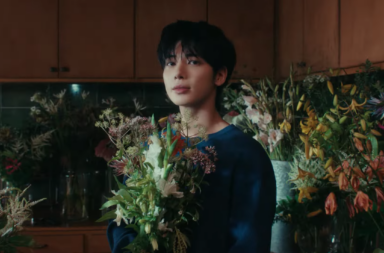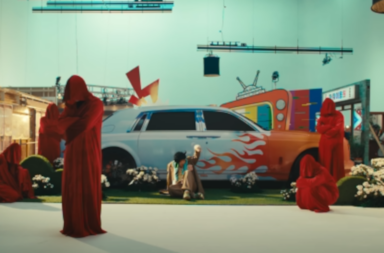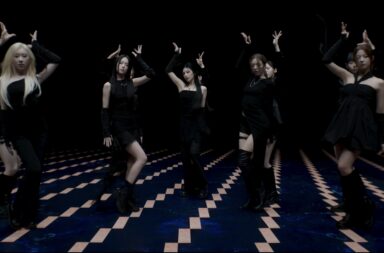B.A.P‘s Bang Yongguk has just released the music video for his new single, ‘Hikikomori’. Since his contract with TS Entertainment ended in August last year, he has set up his own website, taken up endorsement roles, and has announced both a full album and a solo Europe tour in spring. As his first music release since officially going solo, ‘Hikikomori’ is certainly a bold start, with its heavy themes and unsettling MV.
The Japanese term ‘hikikomori’ is defined in English as an “abnormal avoidance of social contact; acute social withdrawal;” and also the person who engages in this: “a recluse, a shut-in.” Social pressure and anxiety tends to contribute to hikikomori, and as a person shuts themselves in their room for increasing amounts of time, the situation can become more serious, even if they want to stop: depression or feelings of low self-esteem and failure, an altered reputation, or a lack of confidence and touch with the outside world can keep the door shut.
Bang Yongguk portrays this social withdrawal in the MV by retreating from the stage and shutting himself in his room. The MV opens with warm tones and lively camerawork, as Yongguk leaves the stage smiling, though he is blindfolded; the blindfold symbolises a
Most of the MV is slow and simple, with Yongguk in a threadbare grey sweater, trying to take as little space as possible even in his safe place, seeming to want to blend in or even disappear. While the scenes of anger and violence are more familiar in a K-pop setting, what makes the ‘Hikikomori’ MV so raw is the unabashedly open depictions of anxiety and mental illness, without being excessively dramatised or poeticised. It’s Yongguk’s simple actions that are the most heart-wrenching: slowly running a hand through his hair in disappointment after a long moment of vacant staring, or curling up into himself whilst hiding under the table.

The song, structured mostly by just its trap beat and no noticeable background melody, is similarly slow and heavy. Known for his deep voice, Yongguk surprisingly flows from rap into singing, and back into rap, giving the song a haunting and echoing feeling to it. The lyrics of the first two verses are heavy and target the scrutiny of others, challenging the over-simplistic and unsympathetic social stance on the nuanced and sensitive nature of the anxiety that might have led to a state of hikikomori:
If you ask why are you hiding
Hey, why is that so important
Why is it that you and I are from different blood
Why are you forcing them to be the same
Split normal and abnormal
Why would anyone else consider
All wounds have the same depth
The bridge of the song, however, is separated by heavy breathing and panicked shouts in silence, and is very upsetting to hear. The rap speeds up afterwards as the lyrics become more frantic:
I’m dying every day
A room of time and spirit that reflects it
What’s real for me when I live
I don’t know, I just throw up and live a messy life
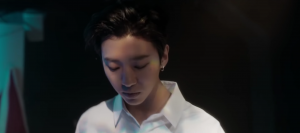
The MV reflects this anxious episode well through its unsteady camerawork and portrayal of Yongguk’s reflection in the mirror watching him. What’s odd is the addition of the saxophone: though it complements the music well, the themes and content of the song and MV at that moment are extremely dark and sensitive. If the aim of ‘Hikikomori’ was to use discomfort to surprise an audience into thought and discussion of the topics it addresses, then at least it is successful in this, even if it does make the MV and song difficult to watch and listen to.
The bridge ends with the sound of a door being closed again, as Yongguk pushes away a camera that is recording him from above, symbolising a rejection of an invasion of his privacy in a place where he feels safer, and also a rejection of others looking down on him: at the social stigma and negative image of social anxiety. The shutting of the door is an important symbol: it can be a physical representation of the closed door of the room of a hikikomori, or a barrier against society. It can also suggest the closing off of the mind or of emotions:
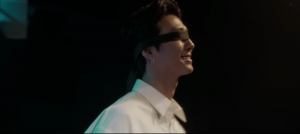
I am Hikikomori Hikikomori
Hikiko, I’ve got a blank head
Hikikomori
Sad, empty-hearted me
Yongguk uses wordplay in the lyrics here to move from being shut in to exploring mental and emotional emptiness and numbness in relation to it: “mori” means head in Korean.
The scene of pushing away the camera is immediately followed Yongguk walking back into his room, looking more dressed and made up than in the rest of the MV, and combined with the sound of the door, recalls the performance at the beginning of the MV. But the performance shows its cracks when he is in his room again, screaming in between his forced laughs. This is another heart-stopping scene; though it is one of the more expressive and dramatised scenes of the MV, the contrast between the laughs and screams is painful and disturbing.
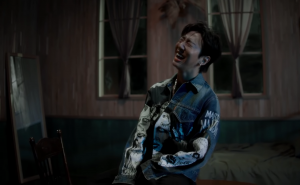
Though on the surface the song seems to be a defense of hikikomori, there is also suffering and helplessness expressed in it, and the MV certainly shows this. Instead, ‘Hikikomori’ seems to be more about challenging social taboos, and opening sensitive topics like mental illness to discussion. Openly addressing it in the song and MV may provide a sense of support or understanding for people listening who have similar experiences.
Overall, for a solo debut of sorts, ‘Hikikomori’ shows Bang Yongguk to be first and foremost concerned with addressing personal and social topics, rather than with establishing his image as a socially mainstream one. In his determination to do so, the song and MV can’t help but demand critical thought and attention, and make it difficult to mindlessly enjoy it. But this is probably the whole point of it. What did you think of ‘Hikikomori’?
(MV and lyrics via Youtube [1] [2]. BBC. OED. Images via Bang Yongguk.)
